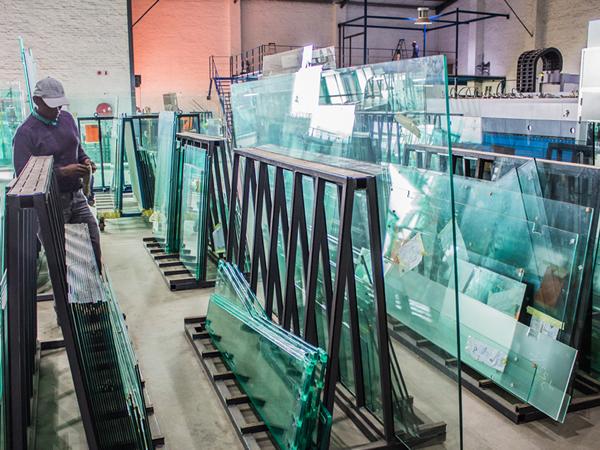Toughened vs standard glass
Toughened glass is up to five-times stronger than normal glass and has greater shatter resistance properties. It’s for this reason that toughened glass is ideally suited to a number of applications from shower screens to car windshields.
Machine condition monitoring is the backbone of forming a proactive maintenance program for critical rotating equipment – it allows you to predict potential issues and plan maintenance in advance, before it’s too late.
We explore the glass toughening process and how condition monitoring can enable engineers to detect early signs of faults on machinery.

What are the benefits of toughened glass?
- Strength: It can withstand a much harder hit without breaking and is less prone to shattering
- Safety: Instead of large shards of glass, it is instead treated so that it will break into small, blunt pieces under pressure, making it much safer than shards of normal glass
- Heat resistance: Can withstand temperatures up to a 250𝆩c
- Sound reduction: A reduction in noise levels of up to 60dB
- UV protection: Absorbs 65% of UV rays, giving it an SPF of around 16
- Durability: The quenching process means the glass is much more durable and less prone to breakage than standard glass
- Impact resistance: Suitable for safety applications in many situations as much more impact resistant and protective compared to ordinary glass
- Versatility: Can be used for a number of uses with a different coating and finishes for desired use

What does the glass toughening process entail?
The process involves compressing and tempering the glass with both heat and cool air. The glass is first cut to size, the edges ground, chamfered and holes drilled as and if required. It then goes through a washing process prior to being fed through a furnace at approximately 700𝆩c.
As the glass exits the furnace, it then goes through a quench chamber which applies high pressure, cool air from above and below by large centrifugal fans. These centrifugal fans are subject to heavy variable speeds and loads which cause high stresses on rotating impellers, bearings, shafts etc.
Why is condition monitoring important?
The machines used in the glass toughening process are subject to arduous duties and tend to to be the critical pieces of kit to supply the whole processing plant. There is normally no standby machine which can be used as backup. It’s therefore important to trend data to anticipate potential breakdown and/or failure so that repair and replacement can be planned in good time, avoiding costly downtime. Regular condition monitoring, normally carried out monthly or quarterly intervals (depending on the criticality of machines), enables engineers to detect early signs of faults on machinery. Learn more about WDB’s Condition Monitoring Services.
Why should you carry out condition monitoring?
During the condition monitoring process, the following (but not limited to) can be carried out and identified:
Crack detection of fan impellers
Vibration analysis on all bearing points
Thermal imaging of electrical panels and bearings etc.
Electrical faults on panels (loose contacts/connections etc.)
Shaft misalignment
How can WDB Ltd help?
WDB Ltd is a major engineering services provider for toughening plant fans across the UK and worldwide. We have been providing specialist services since the early 1990s to leading glass toughening companies as well as glass manufacturers.
Our services include condition monitoring of fan and motor bearings, crack detection, repair, dynamic balancing (on and off site), the manufacture of, and on-site installation of new impellers, bearings, shafts etc. as well as design and manufacture new fan units and inlet dampers to control air flow.
Our highly skilled and experienced team of engineers provide on-site vibration analysis/condition monitoring and thermal imaging services which help to predict potential failures as well as extend the trend machine life.

Speak with us about condition monitoring and find out how we can help.
Get in Touch
The benefits of Machine Condition Monitoring for rotating machinery
Machine Condition Monitoring is a critical component of a predictive maintenance program, and is usually carried out on rotating equipment and other machinery including pumps, electric motors and compressors.
View PostStatic Balancing vs Dynamic Balancing
Balancing is the complex procedure of working to enhance the mass spread of a body so as to rotate in its bearings without the unbalanced centrifugal forces acting on it. But what’s the difference between static and dynamic balance?
View Post